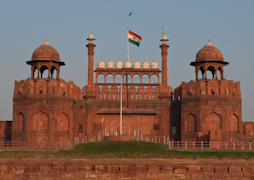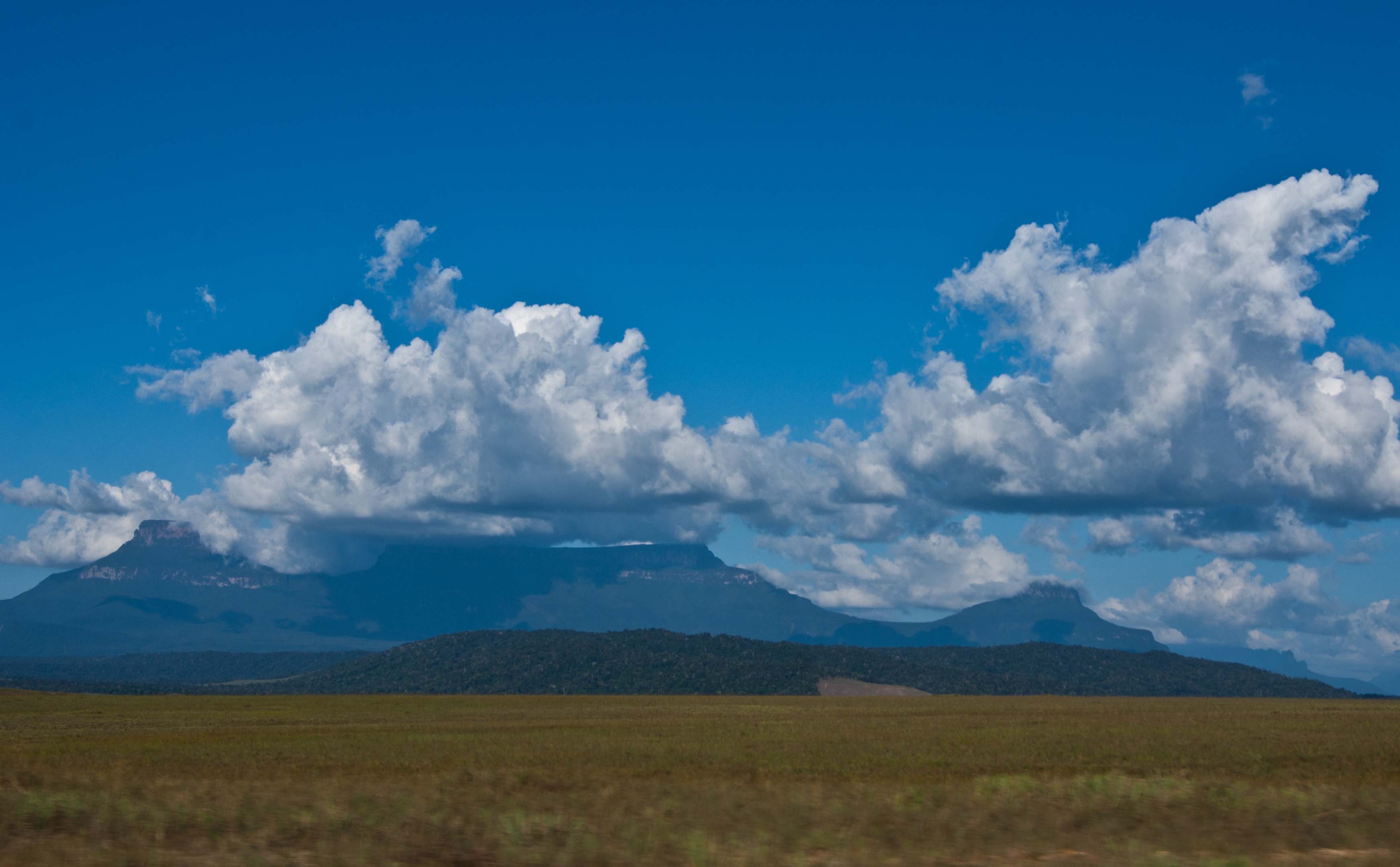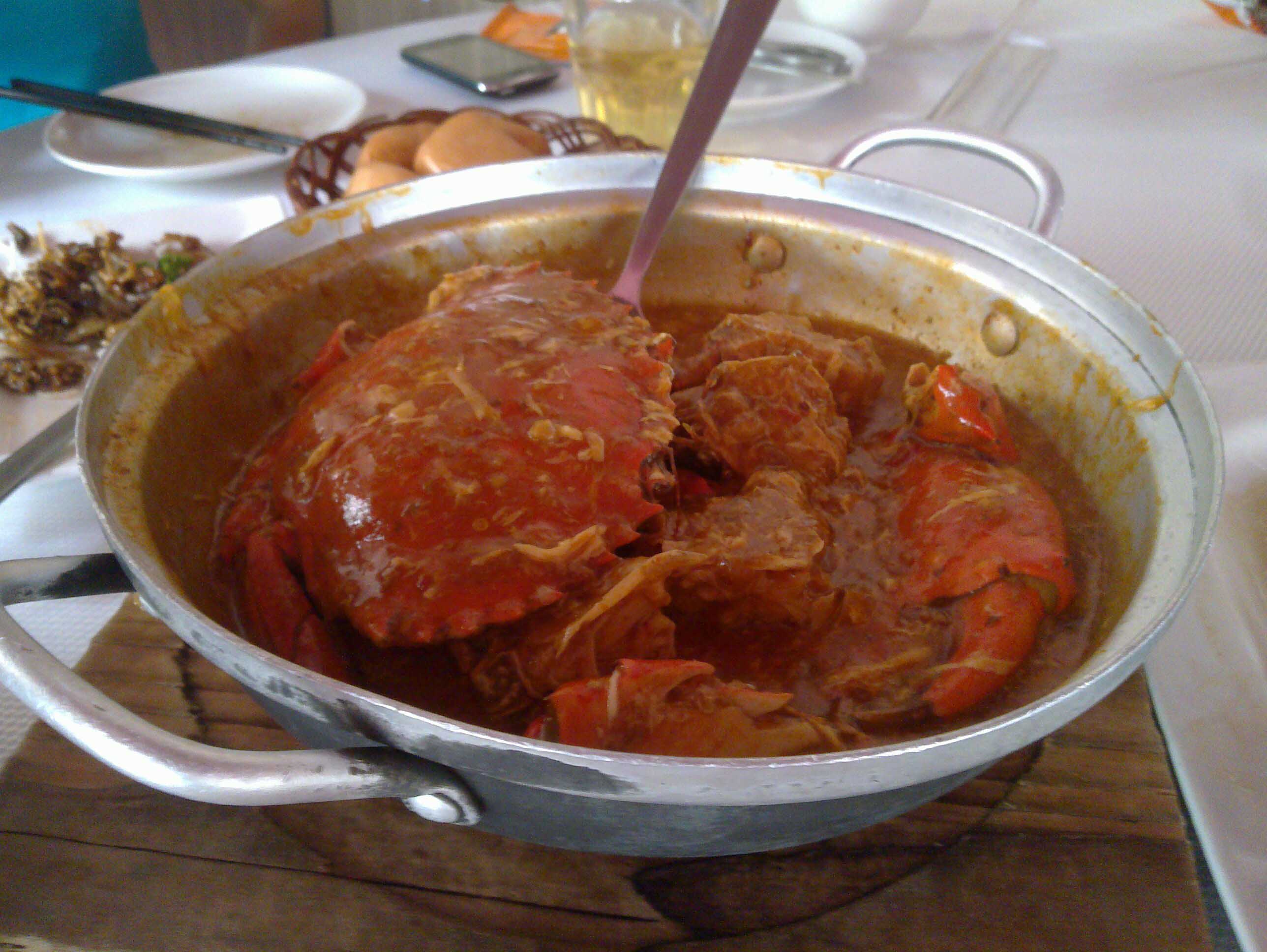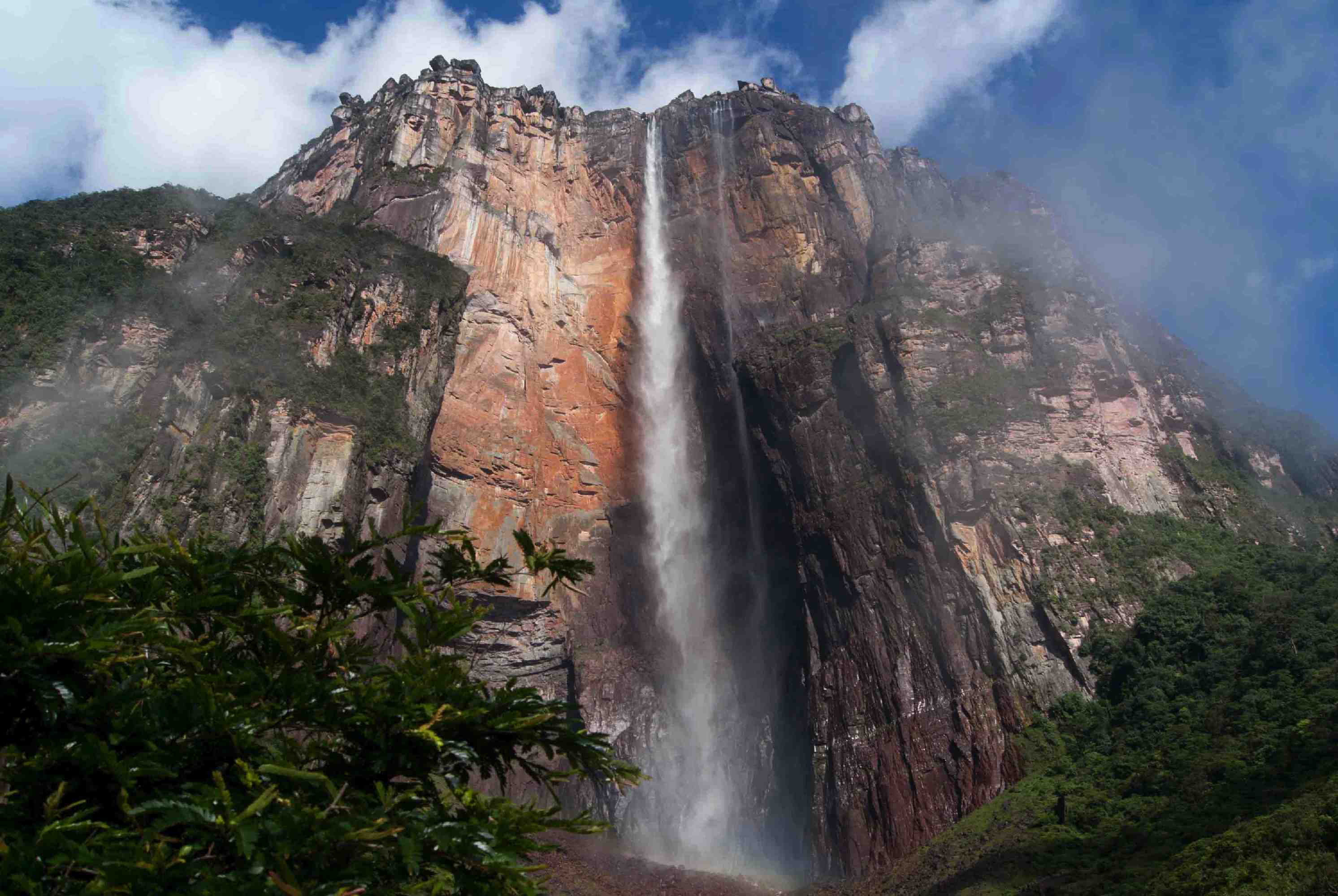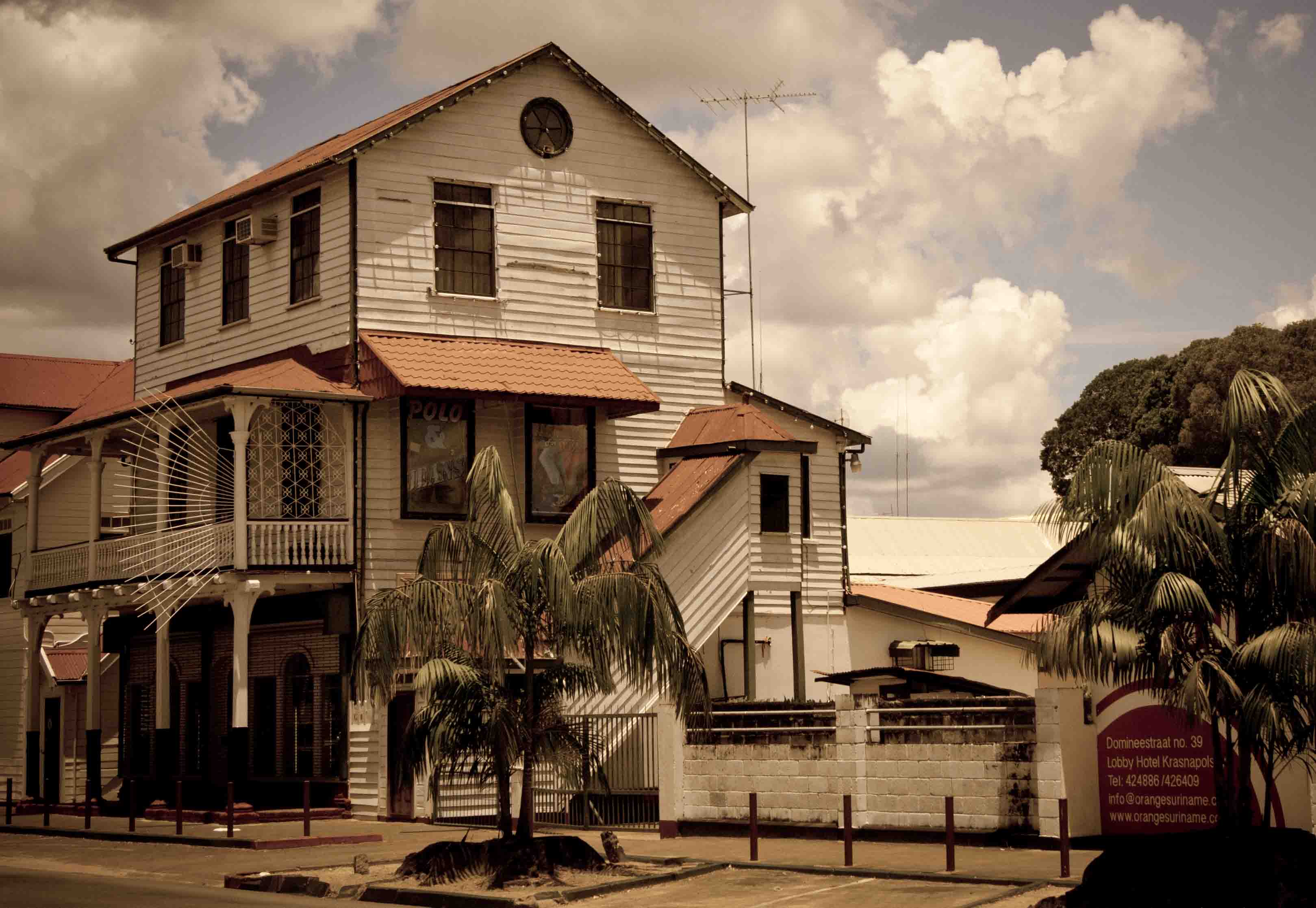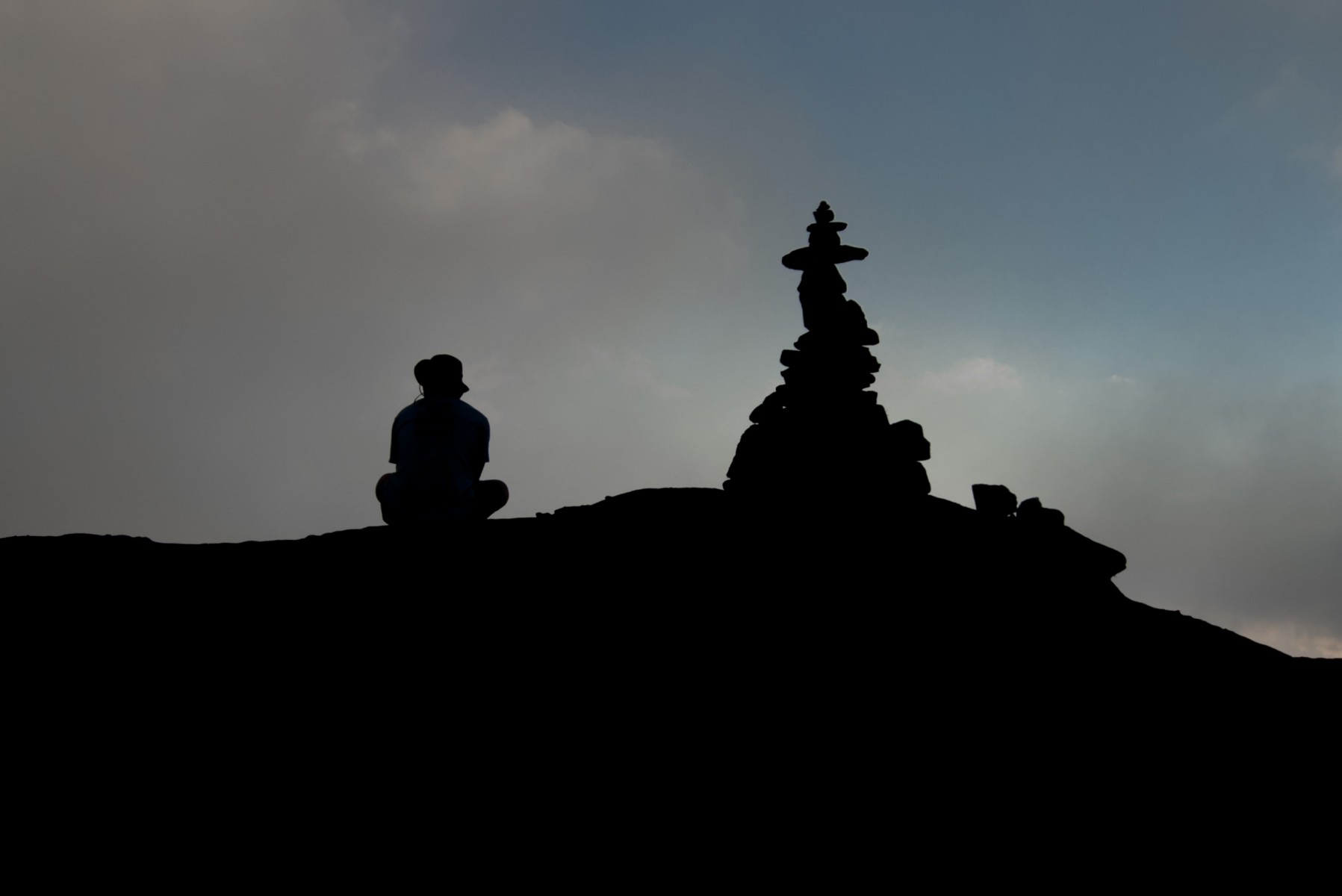A friend informed me that my holiday in Koh Samui coincided with the annual island marathon, so I had little choice but to run the half marathon (no full marathon heroics this time). The registration was a breeze and I got done within 30 mins after having caused my fair share of confusion when I refused the questionable registration freebies. The entire island seemed to be buzzing with running talk and for the first time in 8 years, I spotted Kenyans in South East Asia. Whoa. This could only mean that the marathon had a cash prize. A friendly jambo-habarigani-kwaheri (hello-howareyou-goodbye) later, I was off on my pre-race day 5km test run, which confirmed what I’d suspected – I was out of form, a beer belly was on its way in, and it was too hot to run. Just the way I like it.
The race kicked off at 6am and I killed time until then by answering fellow runners’ questions about my shoes (I run in Vibram Five Fingers). I snapped out of zombie mode when I noticed that most of the runners had overtaken me within the first 100m of the race. Several glances at my watch confirmed that I was on target with a 12kmph speed. This meant that I was either going to finish the marathon last or first. Fortunately for my self esteem it turned out that most of the runners were running their first half marathon and had shot out of the blocks, all guns blazing.
The thing about U-turn half marathons is that the first half is always more difficult because you know that every step you take, (every move you make, every smile you fake, la la la) is going to have to be retraced. Despite severe motivational issues at the halfway point, I managed to keep going and wound up with a half decent 1 hour 44 minute finish.
3 Tips for Your First Half-Marathon
1) Keep your cool – Just like the Koh Samui half marathon, many newbie runners lose the plot at the starting line. It’s extremely easy to dash the first 100m and then when you’re gasping for breath, realize that you’ve got 20km more to go. Don’t be that person. Take the first 2 kms easy as you warm up and get stuck into your stride. You can always speed up at the halfway point in case you realize that you’ve got some extra fuel in the tank. Your first goal should be to finish the half and not to break Kenyan records.
2) Go easy on the water – Surprising as it may seem, more runners die from hyper-hydration (or water intoxication) than from dehydration. We’ve been conditioned to understand that running induces sweat and sweating dehydrates. However, drinking tons of water doesn’t replenish the lost salt. Excessive water consumption further dilutes the salt levels in the body and causes a drop in performance. In extreme cases it can also lead to death with women being more susceptible than men. The amount of water you should drink depends on how much water your body loses per hour and this varies from person to person. If you consume more that 600mL per hour, you’d better be know what you’re doing.
2) Carry a snack – Running requires energy. And after you’ve been on the move for 90 mins, the sugar in your blood becomes important since your body has used up all the muscle glycogen reserves. Consuming carbs and sugars on your run will prevent your body from running out of fuel and will improve your performance. Possibilities include chocolate, sports drinks, fruits, energy gels, etc. I usually carry along a bar of snickers on my long runs. Try and consume around 100 cal after an hour of running and then 100 cal every 40-45 mins after that and you will survive.
In and Around Koh Samui
The 3 sister islands of Koh Samui, Koh Tao and Koh Phangan are World famous for their white sand beaches, full moon parties and the beautiful dives. My Koh Phangan dive was the best I’ve had in my short diving career (20 dives) and for this reason alone, if you’re a diver, Koh Phangan should be on the top of your list. If you’re not a diver, you can always just chill on the beach and enjoy a breath taking sunset.
Kigali, the Capital of Rwanda, is the launch pad for this once in a lifetime experience. A 3-hour crammed local bus provides an interesting introduction to Rwanda culture. Once you get to Ruhengeri, before giving yourself a pat on the back, remember that you’re just halfway there. An early morning land cruiser ride over possibly the bumpiest road in the World gets you to Parc National de Volcans.
Mountain gorillas are an endangered species – poaching and viruses being the biggest problems. The International Gorilla Conservation Programme was founded to fight against annihilation of mountain gorillas. Tourism is an avenue used to fund these conservation efforts. At a steep USD 500 per hour, visiting the mountain gorillas isn’t for everyone. Visits are restricted to an hour because the gorillas get stressed with strangers around. 5 groups of 8 people set out every morning to spend an hour in close proximity with 5 of 13 Gorilla groups that inhabit the area. Each group has a male silverback as a leader. Younger males often steal females from existing groups to form their own group.
Before the hike came the safety briefing. Our guide was quite judicious with his words but we clung onto them knowing that if shit hit the proverbial fan, our lives would depend on this. In summary, don’t point at them, don’t look them in the eyes and if they walk towards you, running is futile. Hide behind the guide and pray.
Rwanda is often referred to as the land of a thousand hills and its quite apparent why, once you begin the trek into the mountains of Parc National des Volcans. After an hour’s worth of uphill climbing we caught sign of the first gorilla – a young silverback. The sight left us spell bound. Their human resemblance was unsettling and the close proximity intimidating. I still find it hard to believe that mountain gorillas are vegetarian.
This experience was so different from anything I’ve ever done before. There was no adrenaline rush, just a sense of awe. There’s a world of difference between seeing defeated creatures in a zoo cage vs. standing 3 feet away from a massive creature, capable of snapping my spine in two if it wished. We were fortunate to visit a group with a 3-month baby. The little gorilla kept imitating the silverback by slapping its chest and then attempting to wrestle with another young gorilla twice its size. Before we knew it, our hour was up and it was time to go.
Rwanda has come a long way in the past 15 years having recently being voted as the easiest place to do business in Africa. However, the white elephant in the room is still the genocide of 1994 when the entire world stood and watched while a million Tutsis were murdered in cold blood. The Genocide Museum in Kigali analyzes events leading up to the genocide. The graphic images and detailed stories are disturbing and act as proof of how cruel the human race can be. On the flip side, Hotel des Mille Collines (a.k.a Hotel Rwanda – responsible for harbouring Tutsis and saving over 1200 lives during the genocide) stands towering over the city reminding us that not everyone bows to the whims of the majority and that we all have a choice between what is easy and what is right.
You’ve probably never heard of the Mughals. Yet every time a business magnate is referred to as a Mogul, he is compared to the Mughals who were famed for their wealth and power. Etymology aside, I bet the mention of butter chicken and naan is sure to bring back some fond memories.
The Mughals were Persian invaders who conquered India in the 16th century and proceeded to rule India for over 300 years. Their influence on the Country is visible even today. Mughal food is only one facet. Islam is another. And the Islamic influence that they brought to the architecture left an in-erasable stamp on India and the World. At its zenith, the Mughal empire ruled over 25% of the World’s population. Impressed?
A city with 20 million people hardly seems like the best place to go hunting for Mughal architecture. New Delhi although flat, hot and crowded, has a wealth of beauty hidden behind the chaos. Surprisingly enough, the city houses 3 world heritage monuments and a host of other beautiful structures. Most city dwellers see nothing out of the ordinary as they drive past a huge 600-year old structure on their way to the market. For a person new to the city, this is a priceless find.
Just to give you some background, the Mughal Emperors ruled over India in the following order: Babur – Humayun – Akbar (the Great) – Jehangir – Shah Jehan – Aurangzeb. Enough about Mughal history, more on the big 5 below..
Humayuns Tomb
Widely acclaimed to be the precursor to one of the World’s wonders – the Taj Mahal, the resemblance is uncanny. As with many Mughal monuments, this gigantic tomb for King Humayun is built from red sandstone. Babur, Humanyun’s father, requested to be buried under the stars and so his relatively modest tomb lies in a corner of the gardens of Humayuns tomb.
Qutub Minar
No one know why this monument was built. Some say as a symbol of victory and some say it was a tower for prayers. That aside, the Qutub Minar was built in the 13th Century and to this very day, towers over Delhi. At a staggering 240 feet, the monument is adorned with beautiful red sandstone carvings and an occasional parrot on the outside. The tower has been closed to the public after a few suicide cases. Most of the buildings in the Qutub Compex lie in ruins. The iron pillar next to the Qutub Minar is one of the World’s oldest metallurgical works. Legend has it that if you can wrap your arms around it with your back against the pillar, your wish will be granted. The iron pillar now has an iron railing around it, protecting tourists from themselves.
[Update 1/11/11] Some of my astute readers have pointed out the the Qutub Minar wasn’t built by the Moguls but was built by the Khiljis which was one of the Dynasties that preceded the Moghuls.
Hazrat Nizamuddin Dargah
Nizamuddin was one of the most popular Sufi Saints from the 13th Century. To this very day, many Indians flock to his tomb to pray to Saint Nizamuddin. Although this tomb is located right next to the posh, well maintained Humayun’s Tomb, the neighbourhood deteriorates a bit and gives you a glimpse into the chaos that is truly India. Shop keepers fight for a chance to sell you flowers for the tomb and people yell at you to leave your footwear outside. Once you get into the courtyard, you’ll see both devout Muslims and Hindus worshipping this Saint, hoping that their prayers are answered. All in all quite an extraordinary experience.
Red Fort
Shah Jehan (of Taj Mahal fame) made Delhi his Capital and renamed it as ShahJehanabad. He also commissioned the Red Fort to mark this event. The Red Fort lies smack in the middle of Delhi. Although not as intricate as the other Mughal monuments, the Red Fort is remarkable for its vastness and its red sandstone architecture. Most of the residential palaces within the fort were destroyed when the British captured the fort in 1857.
Jama Masjid
The Jama Masjid translates to “Friday Mosque” and also dates back from the Moghul era (Shah Jehan at it again). Stepping out of the chaos of the adjoining market and into the mosque’s courtyard, you are enveloped by a sense of calm and awe. If there is a God, he must surely be here.
The mosque and its surroundings are not well maintained and lie in stark contrast to the rest of the monuments from the Mughal era. The reason being that it’s treated as a place of worship rather than a monument from a previous era. The Jama Masjid has the potential to be so much more if only people were able to set aside religion and recognize the cultural significance of this monument. Sadly enough, this is not an isolated case and mindless religion (everywhere) continues to be one of India’s greatest challenges.
Q: What do the following have in common
- Jaywalking
- Chewing gum
- Durian on a train (its a fruit with a questionable odour)
A: They’re all crimes and have hefty fines attached to them.
Welcome to Singapore!
Singapore being a ‘fine’ city holds true for most of the year except for one weekend when fast cars are air dropped into the city bringing along utter chaos, deafening noises and the World’s only night grand prix. Rules and regulations no longer count for much and jaywalking tourists are the norm. Exorbitant alcohol prices escalate to ludicrous levels. The Louis Vuitton bar for example charged SGD 20,000 for a table of 8 at a grand prix after-party. Enough said.
Entertainment
After having sold pit grandstand tickets for SGD 1500 (disclaimer: I got a free ticket), they had better damn right make sure that it’s an amazing experience. Shakira, Shaggy, Linkin Park, and random unknown singer (who appeared to be famous) were put on display and raised my non-existent expectations.
Onward to the races then.
Vrrooom….
I’m guilty of having claimed that watching the race on TV would be far superior to risking permanent hearing loss in the stands.
I was wrong.
There’s something about 25 F1 cars revving their engines, waiting for 5 lights red to go off that sends your adrenalin levels through the roof. Come lap 1 when all the cars are still together, there were 25 cars speeding past the pits at top speed and then braking from 250kmph to 80 kmph in a few metres. No crash at the turn seemed to defy logic. The drivers literally live on the edge and a small error would kill them and probably a few behind them. This is thrown in your face when you’re in the stands but isn’t so obvious when you watch the slow motion replays on TV.
The Verdict
The race was exciting; the entertainment was amazing; but was it worth the price (SGD 1500)?
Probably not…
Mention Venezuela to a random man and he’ll definitely rave about a Country that has produced the most number of beauty queens. If he’s a BBC planet earth fan, he’ll throw in a few words of praise for the majestic Angel Falls or the inaccessible Mount Roraima. What you’re unlikely to hear about is the beauty of the Grand Savannah. Green fields beneath a dark blue sky dotted with white cotton clouds and mountains decorating the background.
The Grand Savannah
If you’ve got 30 bucks (USD) to spare, you could get a cab to drive you around this natural paradise for a day. What’s even better is the entire savannah is filled with numerous waterfalls; some as large as Kaietaeur, yet unconsciously ignored since waterfalls are numerous enough to not be considered anything out of the ordinary.
Jasper
By far the most remarkable of the lot, Jasper is a tiny waterfall that flows over red jasper rock. For the uninitiated, Jasper is an opaque hard impure variety of silica that is used as a gemstone. How do you like that? This waterfall flows right over a semi precious rock!
Saro Wapo
Great waterfall if you’re looking to repeatedly jump off the edge into the cool water below. Once you’ve belly flopped a few times, look for a shady spot under a tree and take a nap. It doesn’t get any better than this. The pictures speak for themselves.
Kawa
Long river with a series of waterfalls. Rather than the waterfalls, the highlight here was an elusive iguana.
Kapi
Sad to say that no one seems to pay too much attention to this gigantic waterfall located at the side of the highway.
Pacheco
Another waterfall (yawn). However, this one stands out because of the numerous vultures that nest in the forest right beside the waterfall. Before you reach for your shotgun, remember that these creepy birds are more terrified of you than you of them. And rightly so!
Singapore doesn’t offer much in terms of entertainment. Some (not me) would say it’s boring. As a result of this, most Singaporeans list food as a hobby and a passion. Eating out is the norm here. And with great cheap food available at every corner, who’s to blame.
Having lived in Singapore for 7 years and then proceeding to move out but regularly pass through the Country, I noticed myself unconsciously settle into a routine. On landing in Singapore, I religiously make a pilgrimage (or a dash) to a few iconic eating spots every single time.
If you’ve got a weekend in the city, these are the places you must hit up. While the list barely scratches the surface, it gives you a taste (unintentional pun) of what Singapore has to offer.
1. Chili Crabs at Jumbos
It would be a crime to pass through Singapore and not pay your respects to the famous chili crab. Cooked in a sweet spicy chili sauce, the crabs are imported from Sri Lanka. Tiny fried buns go well with the gravy. If you’re not much of a chili person, the black pepper crabs usually don’t bite back. Be prepared to get dirty.
2. Hummus and Hookah at Arab Street
The best way to unwind after a hard day’s work is with a smoke pipe. Fine I’ll concede that it’s the second best to beer. Come 7pm, chairs and carpets (non-flying variety) get rolled out onto the pavement and Arab Street wakes up. As the name suggests you’ll find a wide variety of shisha places with delicious Middle Eastern food. From hummus to falafel to shawarma – they’ve got it all. While most of the places forbid alcohol, a few places do have Efes (light Turkish beer) on offer.
Sit back, relax, and work on those smoke rings right into the wee hours of the morning. If you’re lucky the belly dancers might show up (not kidding).
3. Lau Pa Sat – The Festival Market
While most Singaporeans will turn up their nose at the prospect of Lau Pa Sat, a Singapore food court must go on the list of any tourist. And what better food court to experience than Lau Pa Sat. From Korean BBQ to Pig Organ Soup to Chicken rice. This place has it all. A word of caution: seats are reserved using tissue packets. Stealing a tissue packet or even worse, stealing a seat reserved by a tissue packet would be frowned upon as a major faux pas.
4. Butter Chicken in Little India
The butter chicken at Juggis in Little India is definitely something to write home about. Coupled with some garlic naan (Indian bread), it’s the Romeo and Juliet of Indian food. Having turned vegetarian (for health, moral, ethical and environmental reasons), I now opt for the Butter Paneer (Indian Cheese) instead. Throw in a mango lassi on the side and life will never be the same again.
5. The Business Lunch: Mei Tong Ramen
Singapore harbors a fascination for Japan and all things Japanese. There’s even a dedicated Japanese mall smack in the middle of the city. As a result of this, amazing Japanese food is available all over the city. If you’re looking to grab a quick lunch and sample what can only be described as ‘the best ramen ever’, Mei Tong is your place. At this tiny little spot hidden away on Robinson Road in the Central Business District, you’re sure to encounter huge queues and impatient rat race people. Their conversation will probably sound like this.
Ah-beng: Eh, tell you ah, this place hor, must come early one. Wait till lunch crowd come ah, then you die orredy.
Leng Loi: Sure ah?
Ah-beng: Ya lah. Sure got no place leh. Later only ‘da pao’ (take away) can.
Angel falls was named after the pilot who discovered these falls hidden away among the many tepuis of Venezuela. The journey to the falls is a long one but, as you shall see, completely worth your time and money. Speaking of which, this trip is very cheap by international standards. Despite Hot Chocolate Fudge’s (Hugo Chavez Frias – too risky to mention his name in Venezuela) best efforts at controlling the currency, black market trading ensures that you get decent conversion rates for the dollar. As a result of this, a 3-day 2-night epic journey to the falls costs only USD 300 including transport, accommodation and food.
#1 Ciudad de Bolivar
Your journey’s launch pad is at the centre of the Country; a place called Ciudad de Bolivar (City of Bolivar). Simon Bolivar was the liberator of Peru, Argentina, Venezuela and Colombia from the Spanish and the founder of Bolivia. This feat earned him a God-like status in this part of the World. Ciudad de Bolivar is tiny and quite charming with old Chevys crawling through its narrow streets. No time to waste here though, a 1.5-hour 6-seater flight to Canaima awaits you.
#2 Canaima
If not for having to live in the shadow of Angel falls, the waterfalls at Canaima would’ve been world famous. Named after a mythical Amerindian hunter / murderer, Canaima is a feast for the eyes from the sky. 4 waterfalls, each as powerful as the next, pour ceaselessly into a large basin. The main attraction though is a tiny ledge that runs directly below one of these gigantic waterfalls allowing you to walk right under the waterfall. A waterfall hurling at over 500,000 litres per second a few feet over your head is a memory that you will carry to your grave. The flowing water is so powerful that the wind generated under the fall could easily knock you over if you’re not careful. Mind blowing at the very least.
#3 Angel Falls
If you’re able to drag yourself away from this, a 4-hour boat ride from Canaima will take you to Angel Falls; assuming you survive the numerous rapids along the way. Fortunately, the boatmen do this day in and day out and make an impossible task seem easy. If the weather God permits, a beautiful view of the falls is to be had from the river camp. Even from this distance you can see that the falls are so high that the water gets blown to a mist way before it reaches the bottom. An hour’s hike gets you to the pool at the bottom of the falls. And this is where you get the money shot.
 At the risk of sounding like a hypocrite, I am a huge fan of the Lonely Planet and usually carry a copy along on all of my travels until an incident last month. Not being a great planner, I completely overlooked buying a guidebook prior to my 2-month ramble across South America and Asia. And then a surprising thing happened.
At the risk of sounding like a hypocrite, I am a huge fan of the Lonely Planet and usually carry a copy along on all of my travels until an incident last month. Not being a great planner, I completely overlooked buying a guidebook prior to my 2-month ramble across South America and Asia. And then a surprising thing happened.
Contrary to my worst nightmare, I survived and I had a blast.
This didn’t seem logical. It got me thinking and led me to question whether guidebooks were the be all and end all of travel.
Now, after about 5 minutes of soul searching, I’ve concluded that guidebooks are overrated. Here’s why.
Say yes to adventure
Travel is adventure and traveling is exciting. Most of us are guilty of having a to-do checklist carefully constructed based on what the guidebook says. And the holiday comprises of a mad rush to check each of these activities off. Checking off activities in a guidebook is no different to being part of an organized tour that rushes through all museums and monuments in a city but completely misses the point. Is this adventure?
Think for yourself
Do your own thinking independently. Be the chess player, not the chess piece – Ralph Charell
Form your own opinions of your destination. Why pay for some travel author to tell you what to think? You are perfectly capable of deciding which of the temples at Siam Reap appeals to you the most. You should also be able to deduce that Brazilians are one of the most hospitable people in the world.
The curse of mass media
Guidebooks are published in the following manner. First a travel writer stakes out a town, gathers all information possible and makes it readable. After much haggling between the editor and author, the book finally gets published. But it doesn’t end there. Bookshops don’t purchase the new version until they’ve gotten rid of the previous version. By the time the book gets to your hands, the owner of the cozy local coffee shop has already shut shop and migrated to the Greek islands. Or worse, you get there and find a bunch of Lonely Planet touting tourists clamoring for the cheesecake, threatening to bring the roof down.
Is it really necessary?
People have traveled for centuries without any information system to fall back on (no internet and no guidebooks). Have you ever stepped into a town without knowing anything about the place, the language or the people? It truly is a strange and wonderful experience. Everything is brand new again and that is the magic of travel. You are out of your comfort zone and this is a vital step in anyone’s personal development – learning to cope when out of your depth. What your guidebook does is handhold you and tell you that everything will be ok. To hell with it…
 Paramaribo is the Capital of Suriname (yes, that’s a Country) and is widely referred to as the Europe of South America. While cheap hostels are a dime a dozen, once you add safety to the equation, possibly only 3 hostels remain. Add to this the fact that the Country speaks Dutch, quotes prices in Euros and is in South America and you’ve got a whole new set of problems on your hand.
Paramaribo is the Capital of Suriname (yes, that’s a Country) and is widely referred to as the Europe of South America. While cheap hostels are a dime a dozen, once you add safety to the equation, possibly only 3 hostels remain. Add to this the fact that the Country speaks Dutch, quotes prices in Euros and is in South America and you’ve got a whole new set of problems on your hand.
Having spent some time at all of these (don’t ask why); here’s what they’re all about.
#1. Twenty24
This is by far the friendliest backpacker place of all. At 15 Euro per night, it’s far from cheap, but this seems to be a more systemic problem with all safe hostels in Paramaribo. You can expect clean spacious room, clean bathroom and friendly staff. The highlight of this place is its open balcony, which allows you to meet the other guests over a beer. Twenty24 is walking distance from the historic centre and 100m away from the Cathedral.
#2. Albergo Alberga
A Beautiful, old Dutch house converted into a hostel, this is located bang in the middle of the historic city centre. This is reflected in the rent. At 18 Euros, the cheapest room here is slightly more expensive than the neighboring two hostels. Other features include a tiny swimming pool. However, due to dangerously high chlorine levels, I’d suggest donning protective gear first. The biggest drawback here is that the hostel gives out a very boring and slightly unfriendly vibe. The guests tend to be older, relatively well behaved and usually prefer to keep to themselves.
#3. Zus and Zo
If you’re looking for a hostel online, this is the place you’ll find splashed around most sites. The hostel is opposite the palm garden and is walking distance from the waterfront and historic city centre. A nice restaurant at the bottom gives this hostel a relaxed atmosphere. All the potential it shows on the outside disappears once you get inside. Tiny crammed rooms and dingy bathrooms is all you’ll get for your 16 Euro.
Sir Author Conan Doyle was not talking through his hat when he wrote about a Lost World. He was talking about a mountain located at the triple border of Venezuela, Guyana and Brazil. The South American and Caribbean tectonic plates colliding with one another formed Mount Roraima. As a result of this, Mount Roraima was lifted above the surrounding land and has remained this way for centuries. With no natural predators (or humans) on the top of this mountain, evolution has had a free reign to take a few liberties. 30% of all plant and animal species found on Mount Roraima are endemic to the mountain. In English, it means that these species can be found only on the mountain and nowhere else in the world.
Arriba Arriba (Up, Up)
Hiking to the top of Mount Roraima to explore this lost World is easier said than done. Tackling the savannah is the first priority and takes up the first two days. Streams at regular intervals give you a reprieve from walking under the unforgiving sun. 13.5km and 11km are swallowed on the first two days. Day 3 might seem mild at 3.5km but is the toughest day of all since you pretty much climb the mountain in 4-5 hours. Lugging your weight and backpacks up around 2000m (elevation gain) is quite a workout.
The Lost World
A few minutes on the top and it’s all clear why this is the lost world. An alien stone studded landscape greets you. Fragments of clouds splashed all across the mountain add to the surreal view. This table mountain is far from flat.
Entertainment at the Top
#1 Skinny dip in a natural Jacuzzi
#2 Crawl 60m through a cave running into the mountain
#3 Pet a Mount Roraima frog
#4 Visit the window in the skies
#5 Sample the endemic cucumber like snack

#6 Get a glimpse of the plant eat animal world
#7 Meditate at the top

#8 Catch the sunset
#9 Indulge in a cave hotel dinner
#10 Sift through crystal and quartz in search of the perfect diamond































